Interactive Wall — An Augmented Reality System for Education and Entertainment
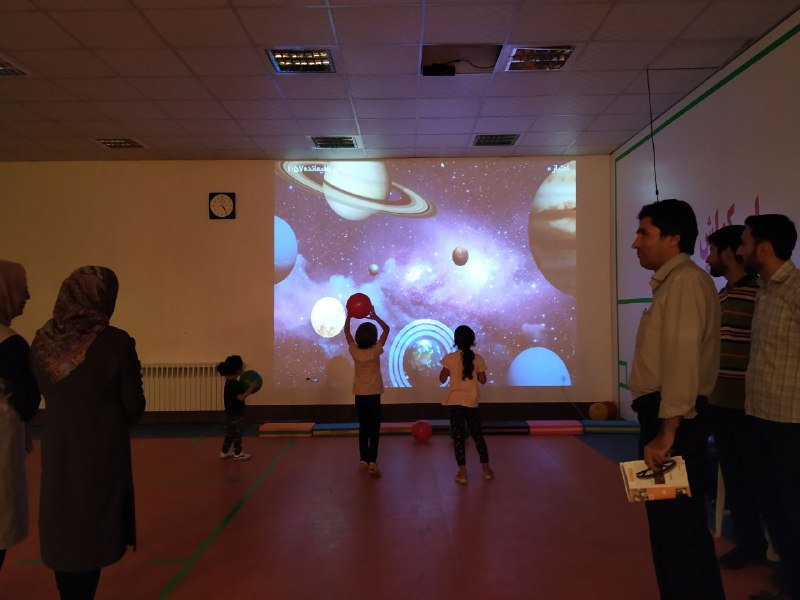
Cooperation: Ferdowsi University of Mashhad
Abstract
The Interactive Wall project introduces a smart Augmented Reality (AR) system that transforms ordinary walls into engaging, interactive spaces for children. Using a 3D depth camera (e.g., Microsoft Kinect), real-time image processing, artificial intelligence, and game engines, the system provides immersive educational and entertainment experiences.
Applications range from language and mathematics learning to interactive games for children with autism, as well as innovative advertising solutions.
1. Problem Statement
Traditional educational and entertainment tools for children are often limited to static media (books, TVs, posters) or isolated digital devices (PCs, tablets). These approaches:
- Lack physical engagement and motor skill development.
- Provide limited real-time feedback.
- Fail to exploit the immersive potential of interactive technologies.
Desired behaviour: A wall-sized interactive system that responds to gestures and movements, creating a playful and educational environment.
2. Proposed Solution (High Level)
The Interactive Wall system consists of:
- A 3D depth camera to capture motion and gestures.
- An image-processing processor for real-time interpretation of depth data.
- An AI engine (Python-based) for gesture recognition and adaptive interaction.
- A C# configuration tool for setup and customization.
- A Unity game engine environment for creating interactive educational and entertainment applications.
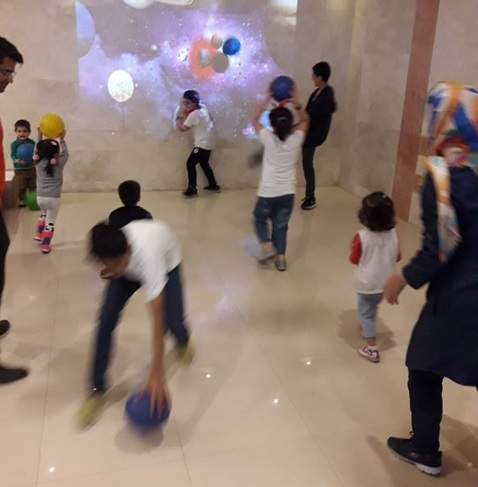
This combination enables robust gesture-based interaction, immersive gameplay, and educational applications.
3. Key Technologies & Concepts
-
Kinect / 3D Camera: Captures 3D depth and motion.
Kinect overview (Wikipedia) -
Image Processing: Converts raw depth data into actionable gestures.
Digital Image Processing (Wikipedia) -
Artificial Intelligence (Python): Recognizes gestures, analyzes actions, and adapts gameplay.
TensorFlow (Google AI platform) -
Unity Game Engine: Develops interactive 2D/3D applications.
Unity official site -
C# Software Layer: Provides setup tools and user interface for activity/game selection.
C# documentation (Microsoft)
4. System Architecture (Recommended)
flowchart TD
A[3D Depth Camera (Kinect)] –> B[Image Processing Processor]
B –> C[AI Engine (Python)]
C –> D[Unity Game Environment]
D –> E[Interactive Wall Projection]
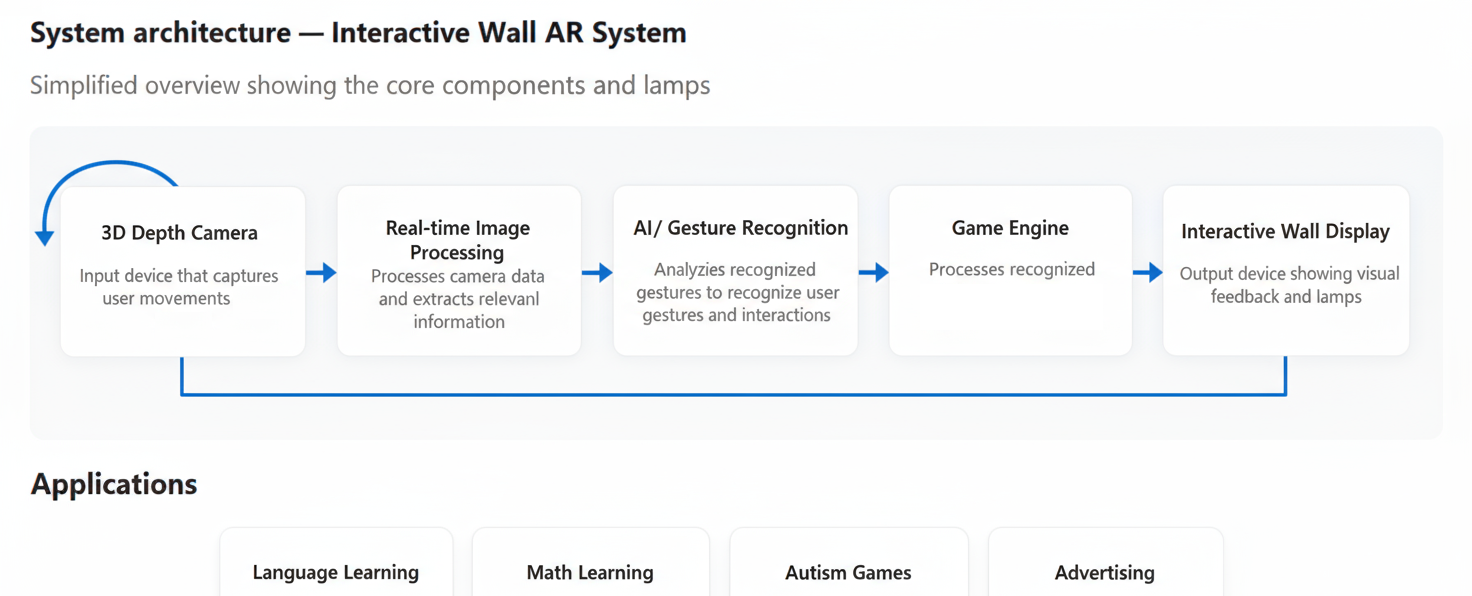
Key components
- Camera calibration: Ensures accurate depth sensing.
- Real-time processing: Optimized for minimal latency.
- AI models: Gesture recognition trained for children’s interaction.
- Fallbacks: Default pre-programmed actions if tracking fails.
The Interactive Wall: Immersive AR for Dynamic Learning and Engagement: Product Catalog & Solutions Guide
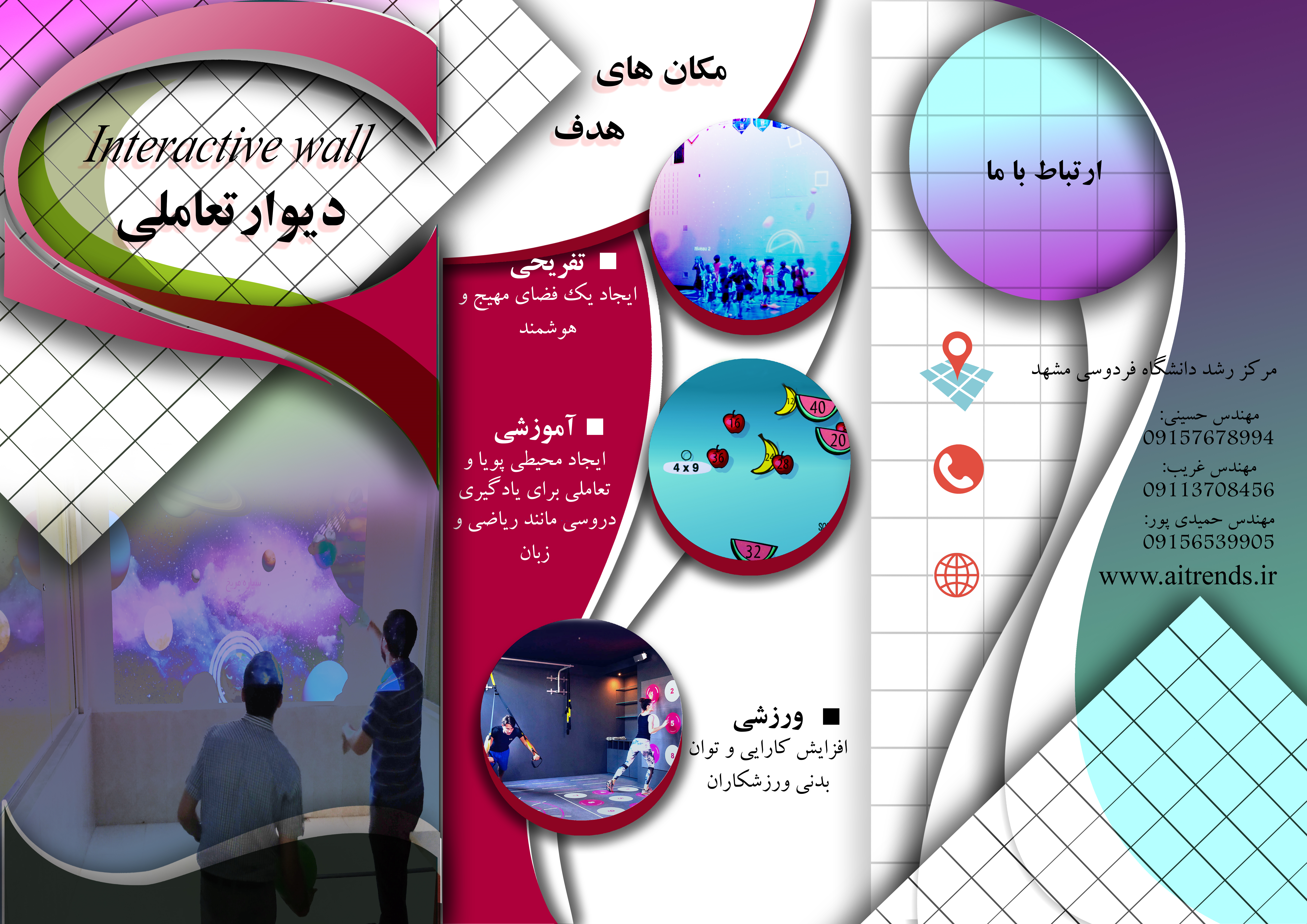
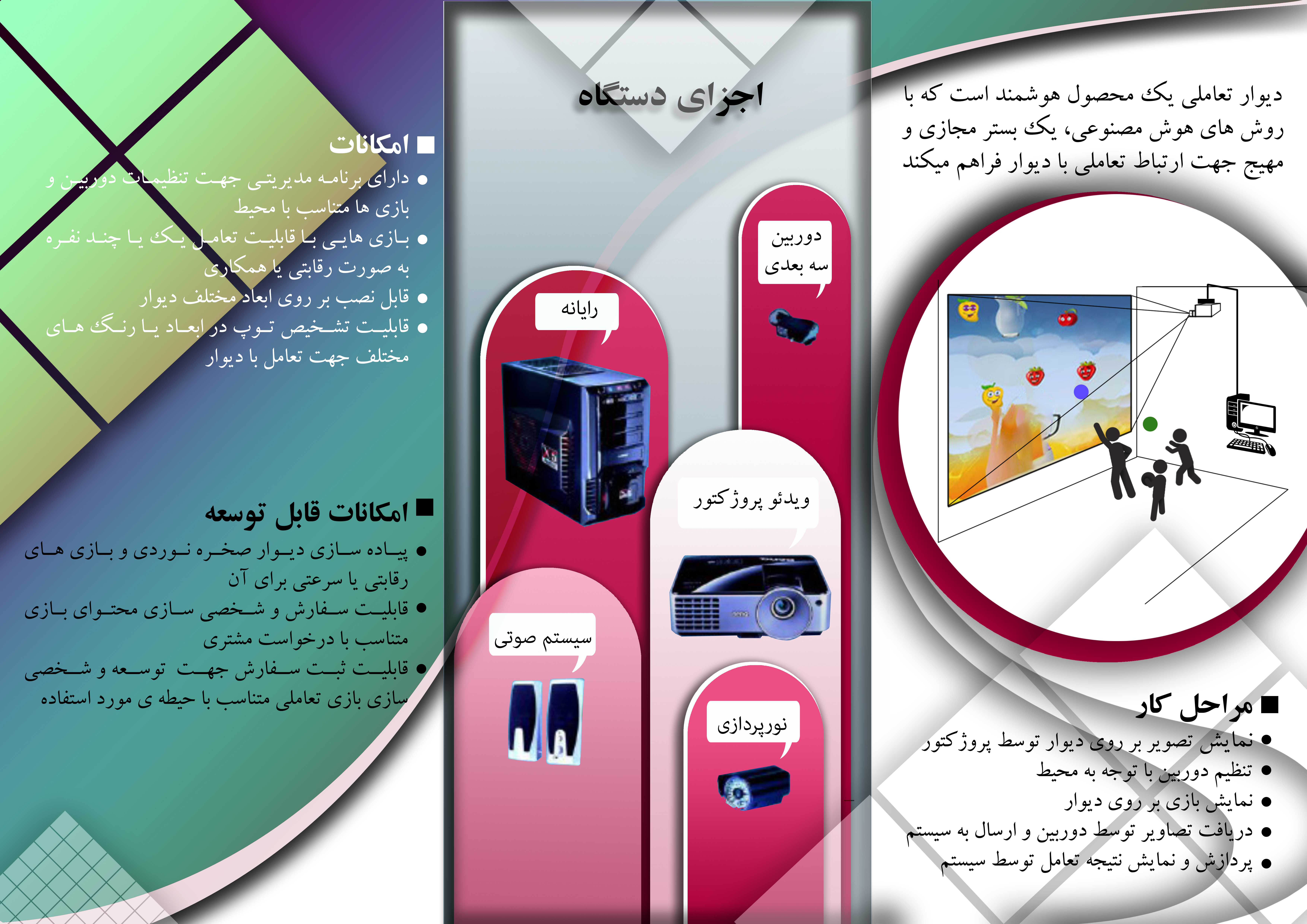
Product Overview
Interactive Wall An intelligent AI-powered system that creates virtual, interactive environments on any wall surface.
System Components
- Computer - Central processing unit
- 3D Camera - Motion and gesture detection
- Video Projector - Display projection system
- Audio System - Sound integration
- Lighting - Environmental lighting control
Key Features
- Management software for camera and game settings
- Single or multi-player interactive games (competitive/cooperative modes)
- Adaptable to various wall dimensions
- Ball detection system (different sizes and colors)
- Real-time interaction processing
Application Categories
- Recreational Creates exciting and smart interactive spaces Entertainment-focused games and activities
- Educational Dynamic learning environments Mathematics and language learning applications Interactive educational content with visual elements
- Sports
Athletic training and skill development
Physical activity enhancement
Performance improvement tools
Expandable Services
Climbing wall integration with speed-based competitive games
Custom game content development based on client requirements
Specialized interactive game development for specific applications
Operational Flow
- Projector displays images/games on the wall
- Camera adjusts to environment conditions
- Camera captures user interactions and sends data to system
- System processes interactions and displays real-time results
Contact Information
- Ferdowsi University of Mashhad Growth Center
- Telegram:@HadiSadoghiYazdi
- Website 1:h-sadoghi.github.io
- Website 2:hadisadoghiyazdi1971.github.io
5. Implementation Steps
- Camera setup & calibration — configure Kinect and validate depth accuracy.
- Image processing module — implement gesture detection algorithms.
- AI integration — train gesture/action recognition models using Python frameworks.
- Software interface (C#) — build an intuitive interface for educators and operators.
- Game development (Unity) — design interactive educational and entertainment games.
- Pilot deployment — test in controlled settings (classrooms, exhibitions).
- Evaluation & scaling — refine based on feedback and expand to broader audiences.
6. Applications
Education
- Language Learning: Interactive vocabulary and grammar games.
- Mathematics: Fun arithmetic and problem-solving activities.
Entertainment
- Interactive play: Keeps children engaged through movement.
- Autism support: Customized activities for social interaction and sensory training.
Advertising & Public Spaces
- Interactive Ads: Smart promotional walls responding to gestures.
- Exhibitions: Engaging booths with interactive digital displays.
7. Addressing Challenges
- Camera Calibration: Use reference patterns for accurate depth mapping.
- Tilt Compensation: Apply mathematical corrections for camera misalignment.
- Depth Estimation: Use machine learning models for robust object tracking.
- Real-Time Processing: Optimize algorithms and leverage GPU acceleration.
8. Deployments & Case Studies
- Installed and demonstrated at Ferdowsi University of Mashhad.
- Showcased in Mashhad Municipality exhibitions.
- Tested with children in interactive educational sessions.
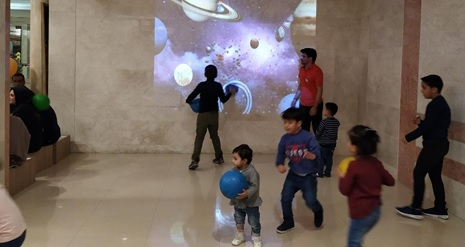
Capabilities
- Games & entertainment
- Educational activities
- Interactive advertising
9. References (Select)
- Kinect — Wikipedia
- Unity Game Engine — Official
- TensorFlow AI — Google
- Digital Image Processing — Wikipedia
- C# documentation — Microsoft
